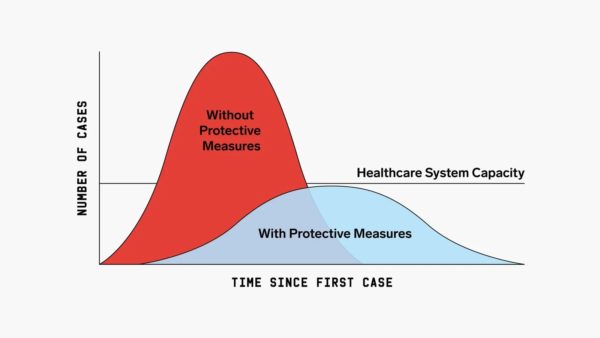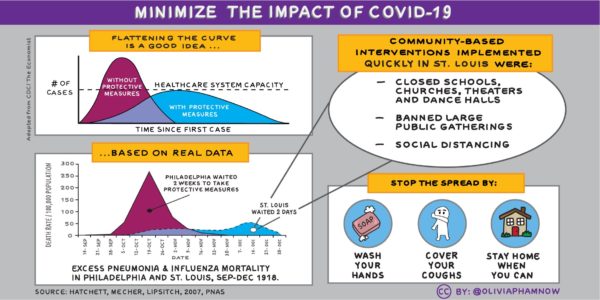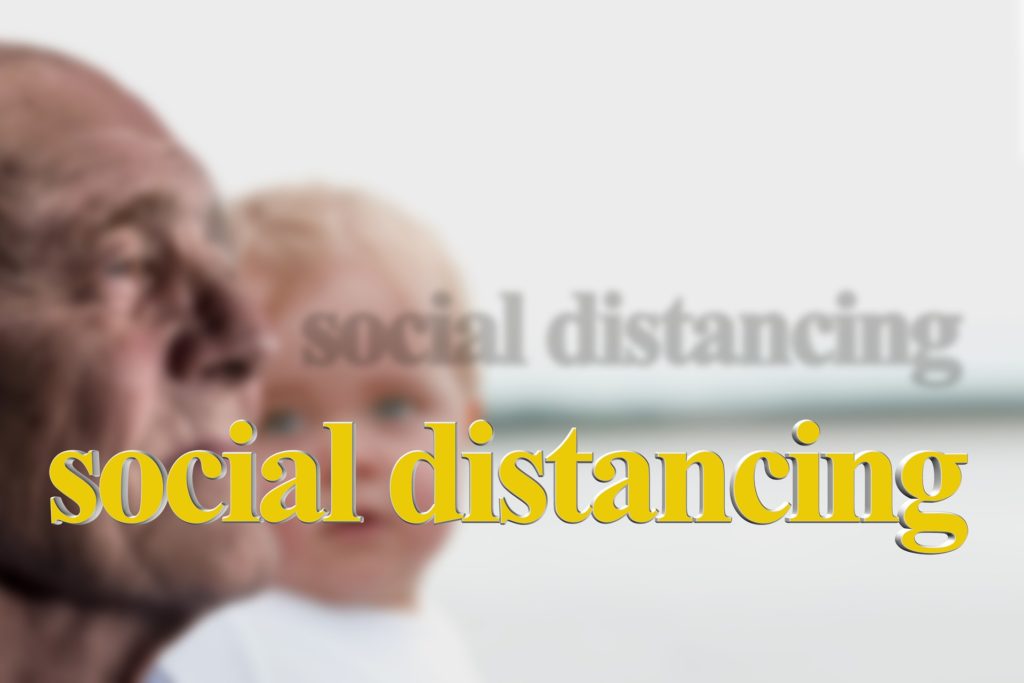In the midst of the COVID-19 outbreak in South Africa, the government has suggested social distancing as a way for citizens to protect themselves from the virus. While it may be inconvenient, it’s a good way to slow the spread of the virus that has now infected over 100 of the country’s citizens.
Social distancing helps to ‘flatten the curve’. The ‘curve’ refers to the projected number of people who will contract the virus over a period of time. Here, the projected number is theoretical and it is used to represent the spread of the virus.
The shape of the curve depends on the rate of infection. If the curve is steep, this means the virus spreads exponentially – it doubles at a steady rate. In other words, a steep curve means that the number of cases in a specific area increases uncontrollably in a short period of time. Every person who can be infected, gets infected in the span of a few weeks. The fall is steep too.
On the other hand, a flatter curve with a more gentle incline means there is a slower infection rate. The flat curve shows that the same amount of people get infected but over a much longer period of time.
As seen in Italy, when the total number of cases grows exponentially (a steep curve) the health care system of the country becomes overwhelmed. Hospitals fill up fast, and they have to turn patients away. Resources such as equipment, medication and tests are depleted before the hospitals have a chance to restock. This is what increases the death rate.
If the curve is flatter (the infection rate is slower) hospitals and medical professionals are under less pressure and can attend to everyone, as there are fewer people rushing to health care facilities at once. In the case of a flatter curve, there is a much larger chance that more people will be treated and survive.
When we isolate ourselves from one another by social distancing, we decrease the rate at which the virus spreads. In turn, this flattens the curve, fewer people will seek treatment at the same time and facilities will have enough resources to treat incoming patients.
This is why the government’s rulings on social distancing are so important to follow. Practicing preventative and protective habits in order to flatten the curve will save lives in the end.
Here are some diagrams to make it clearer:


Picture: Pixabay

